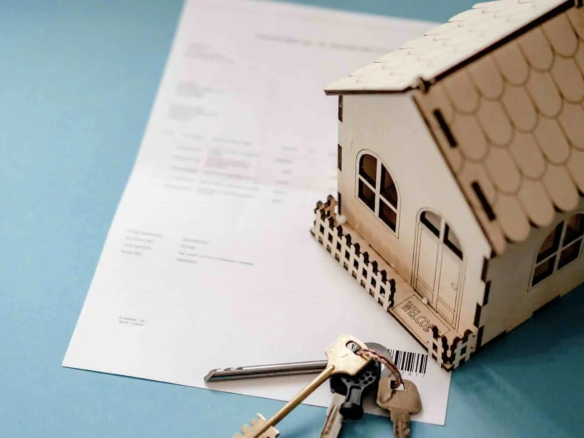A well-crafted residential tenancy agreement is crucial for establishing a clear, fair, and legally binding relationship between landlords and tenants. This document lays the foundation for a smooth rental experience by clearly defining the rights and responsibilities of both parties. Whether you’re a landlord or a tenant, following these guidelines will ensure that your tenancy agreement is thorough and effective.
A residential lease agreement is more than just a formal document in real estate and property management. It’s a vital contract that sets expectations, responsibilities, and obligations for tenants and landlords, serving as the cornerstone of a successful tenancy.
Understanding the Residential Lease Agreement
At its core, a lease agreement is a legally binding contract that details the terms and conditions under which a residential property is rented. Whether the property is an apartment, house, or condominium, the lease agreement clearly defines the rights and duties of both the tenant and the landlord. This ensures that both parties are protected and treated fairly throughout the tenancy.
The Importance of a Comprehensive Lease Agreement
A lease agreement serves as an essential guide in the complex landscape of rules and regulations governing residential properties. It not only clarifies the tenancy terms but also outlines the procedures for handling a wide array of issues that may arise. From rent payments and security deposits to maintenance responsibilities and dispute resolution, a well-drafted lease agreement helps prevent misunderstandings that could lead to conflicts or even legal disputes.
A comprehensive lease agreement fosters a harmonious living environment and ensures a positive rental experience for both landlords and tenants by setting clear expectations and providing a roadmap for the tenancy.
Essential Guidelines
Whether you’re a landlord or a tenant, following these guidelines will help create an effective and comprehensive tenancy agreement.
Understand Local Rental Laws
Before drafting or signing a residential tenancy agreement, it is crucial to understand the local rental laws and regulations. These laws vary by region and cover rent control, deposit limits, eviction procedures, and tenant rights. Ensuring that your agreement complies with these laws helps prevent legal issues and protects the interests of both parties.
Essential Elements of a Lease Agreement
A well-structured lease agreement doesn’t happen by accident. It involves careful consideration of several key elements, each of which plays a crucial role in defining the terms of the lease, the duties and rights of the involved parties, and the overall conduct of the tenancy.
Identify the Parties
The tenancy agreement should clearly state the names and contact information of both the landlord and tenant. If there are multiple tenants or landlords, all their names should be included. This clarity helps prevent confusion and ensures that all parties involved in the rental arrangement are properly identified and accountable.
Specify Property Details
Include a detailed description of the rental property in the agreement. This should cover the property’s address, type (e.g., apartment, house), and any specific features or amenities. A thorough description helps avoid disputes over what is included in the lease and ensures that both parties have a clear understanding of the rental property.
Define the Lease Term
The agreement should specify the length of the lease, including the start and end dates. For fixed-term leases, such as one year, clearly state the duration. For periodic or month-to-month leases, outline the notice period required for either party to terminate the lease. Defining the lease term sets expectations and provides a clear timeline for both parties.
Detail Rent, Security Deposit, and Payment Terms
Clearly outline the rent amount, payment schedule, and due date in the agreement. Specify the acceptable payment methods (e.g., bank transfer, check) and any penalties for late payments. Include details about additional costs, such as utilities or maintenance fees. Transparency in rent and payment terms helps prevent misunderstandings and ensures that both parties are aware of their financial obligations.
Include Deposit Information
Detail the security deposit amount, conditions for its return, and any potential deductions in the agreement. Specify the deposit amount, typically equivalent to one or two months’ rent, and the circumstances under which it can be withheld (e.g., damage to the property). Clear deposit terms protect both the landlord’s and tenant’s interests and help avoid disputes.
Outline Maintenance and Repair Responsibilities
The agreement should clearly define the responsibilities for maintenance and repairs. Specify which repairs are the landlord’s responsibility and which fall to the tenant. Generally, landlords are responsible for major repairs and ensuring the property is habitable, while tenants handle minor maintenance and cleanliness. Clear maintenance responsibilities help prevent disputes and ensure both parties understand their obligations.
Specify Use of Property
Include clauses that outline how the property can be used. Specify whether the property is for residential purposes only or if any commercial activities are allowed. Address any restrictions on subletting or having guests. Clearly defining the use of the property helps prevent misuse and ensures that it is used according to the landlord’s expectations.
Include Terms for Termination
Detail the conditions under which either party can terminate the lease. This includes the notice period required, the process for giving notice, and any penalties for early termination. For fixed-term leases, specify the conditions for early termination if applicable. Clear termination terms help manage expectations and provide a framework for ending the lease if necessary.
Address Dispute Resolution
Incorporate a clause outlining the process for resolving disputes between the landlord and tenant. This can include mediation or arbitration procedures and steps for legal action if needed. Having a clear dispute resolution process helps both parties handle conflicts effectively and minimizes the risk of prolonged disputes.
Reviewing and Signing the Agreement
Before finalizing the tenancy agreement, both parties should carefully review the document to ensure all terms are accurate and complete. It’s advisable to have a legal professional review the agreement to ensure it complies with local laws and adequately protects both parties. Once both parties agree to the terms, they should sign and date the agreement, with each retaining a copy for their records.
Maintain Open Communication
Effective communication between landlords and tenants is key to a successful tenancy. Both parties should discuss any concerns or changes in circumstances that may affect the lease. Keeping lines of communication open helps address issues promptly and ensures a positive rental experience.
Regularly Review and Update the Agreement
Periodic reviews and updates of the tenancy agreement can help reflect changes in laws, regulations, or circumstances. Regularly reviewing the agreement ensures it remains relevant and effective, addressing any new issues that may arise during the tenancy.






Join The Discussion